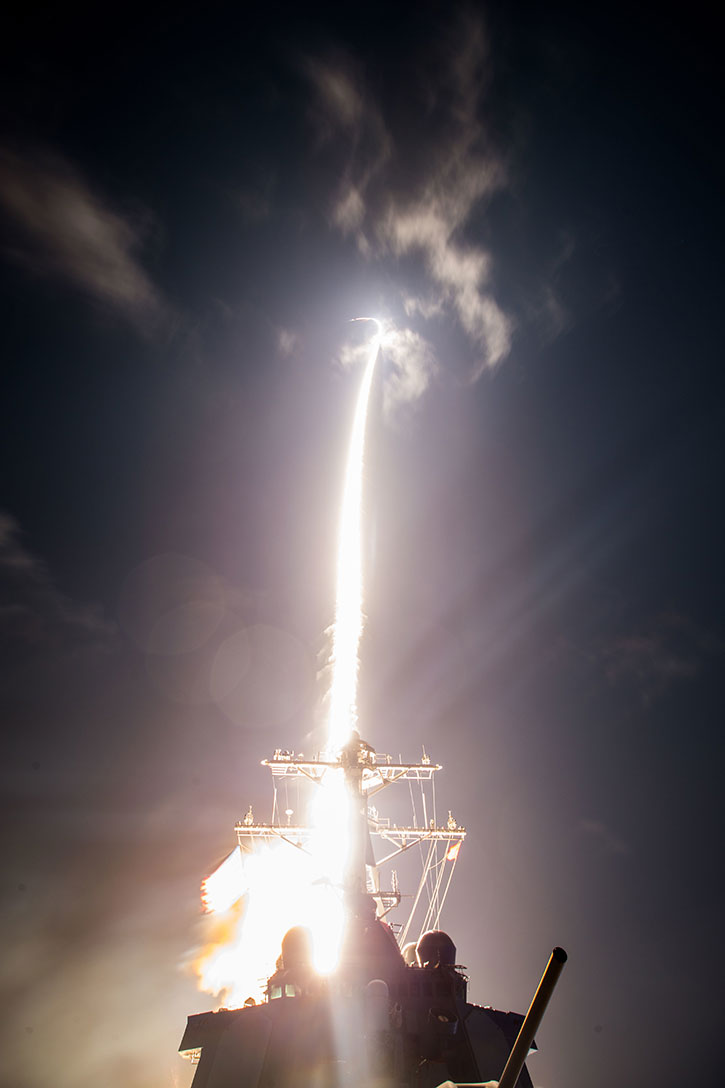
The first live intercept test of the Standard Missile-3 (SM-3) Block IIA interceptor missile was completed successfully on Friday dawn, off the west coast of Hawaii, proving the design maturity of the most advanced interceptor in the sea-based AEGIS Missile Defense system. The intercept was conducted by the US Navy AEGIS test ship – from the USS John Paul Jones (DDG 53) as part of a US-Japanese cooperative development.
“Today’s test demonstrates a critical milestone in the cooperative development of the SM-3 Block IIA missile,” said MDA Director Vice Adm. Jim Syring. “The missile, developed jointly by a Japanese and U.S. government and industry team, is vitally important to both our nations and will ultimately improve our ability to defend against increasing ballistic missile threats around the world.”
The flight test designated SM-3 Block IIA Cooperative Development (SCD) Project Flight Test, Standard Missile (SFTM)-01, was the third flight test of the SM-3 Block IIA guided missile, and the first intercept test. At approximately 10:30 p.m., Hawaii Standard Time, Feb. 3 (3:30 a.m. Eastern Daylight Time, Feb. 4) a medium-range ballistic missile target was launched from the Pacific Missile Range Facility at Kauai, Hawaii. John Paul Jones detected and tracked the target missile with its onboard AN/SPY-1D(V) radar using the Aegis Baseline 9.C2 weapon system. Upon acquiring and tracking the target, the ship launched an SM-3 Block IIA guided missile which intercepted the target. Based on preliminary data the test met its primary objective. Program officials will continue to evaluate system performance based upon telemetry and other data obtained during the test.
The test’s primary objective was a successful intercept. The mission was also designed to evaluate key missile system performance, including the kinetic warhead, divert and attitude control system functionality, nosecone performance, steering control section function, booster performance and separation and the second and third stage rocket motor performance and separation.
This test also marks the first time an SM-3IIA was launched from an Aegis ship and the first intercept engagement using the Aegis Baseline 9.C2 (BMD 5.1) weapon system. Future flight tests will continue to evaluate system performance, en-route to a 2018 deployment at sea and ashore, in support of the European Phased Adaptive Approach Phase 3.
The interceptor’s kinetic warhead has been enhanced to best address advanced and emerging threats, with improvements to the search, discrimination, acquisition and tracking functions. The kinetic warhead, along with larger rocket motors, allows SM-3 Block IIA to engage more sophisticated threats and protect larger regions from short- to intermediate-range ballistic missile threats, providing greater operational flexibility.
The SM-3 Block IIA interceptor is designed to defeat short- to intermediate-range ballistic missile threats. It operates as part of the Aegis Ballistic Missile Defense system and can be launched from Aegis-equipped ships or Aegis Ashore sites. Aegis Ballistic Missile Defense is the naval component of the U.S. Ballistic Missile Defense System. The MDA and the U.S. Navy cooperatively manage the Aegis BMD program. The Missile Defense Agency’s mission is to develop and deploy a layered Ballistic Missile Defense System to defend the United States, its deployed forces, allies, and friends from ballistic missile attacks of all ranges in all phases of flight.



















